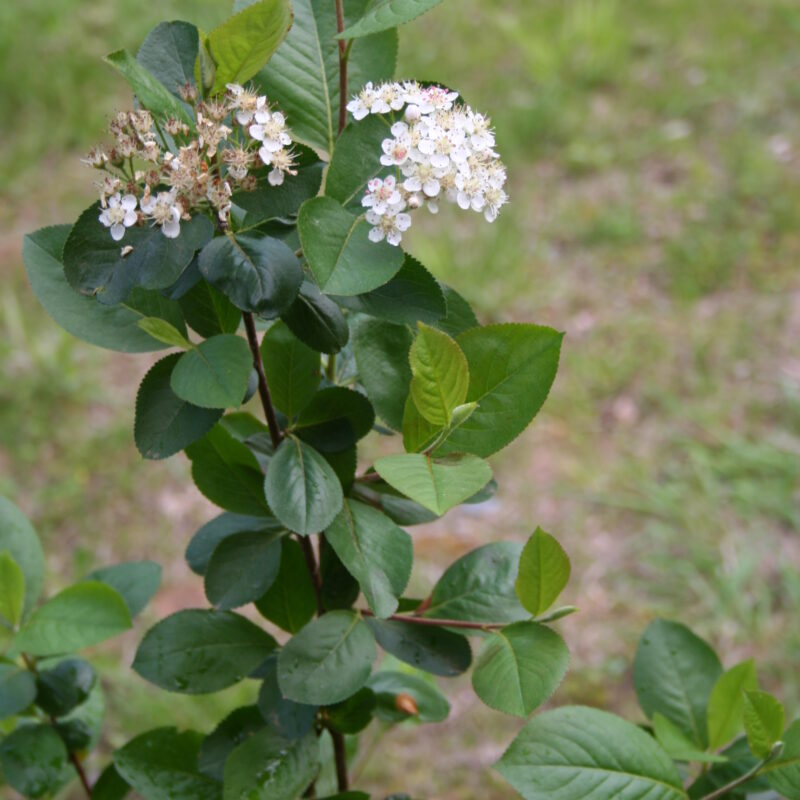Black ChokeberryAronia melanocarpa
Edible, pollinator/wildlife benefits, hardy. A spreading shrub of the rose family that grows 3-6' tall. This species is excellent for wet, lake edge plantings. Also used as an ornamental for its showy white flowers, black fruit and fall color. Good in massing, borders and backgrounds in landscaping. Does well in rain gardens with well drained conditions. Spreads aggressively under favorable conditions.
USDA symbol: ARME6
General Information
| Plant Type | Shrub |
|---|---|
| Height | 3 to 8 feet |
| Light Exposure | Sun, Part Sun, Shade |
| Soil Moisture | Dry, Medium |
| Bloom Color | White |

Tolerances
| Flooding / Inundation Tolerance | Moderate |
|---|---|
| General Resilience | 9 |
| Salt Tolerance | Medium |
| Stress Tolerance | Drought Tolerant, General Disturbance |
Pollinator Value: Very High
| Bloom Months | May to June |
|---|---|
| Larval Host of | Bees |
| Specific Pollinators Hosted | Andrena melanochroa |
| Pollinator Benefit | Insect Pollinated, Provides Nectar, Supports Generalists |
Project Planning
| Project Type | Rain Garden, Sandy or Engineered Soils, Shoreline Buffer |
|---|---|
| Herbivore Sensitivity | Medium |
| Lifespan | Perennial |
| Rate of Spread | Fast |
| Soil Stabilization | Deep |
| Vegetative Reproduction | Clonal |
Range
| County | Aitkin, Anoka, Beltrami, Carlton, Cass, Chisago, Cook, Dakota, Hennepin, Isanti, Itasca, Kandiyohi, Koochiching, Lake, Mille Lacs, Morrison, Pine, Ramsey, Sherburne, St. Louis, Todd, Wadena, Washington |
|---|---|
| Ecoregion | Driftless Area, Lake Agassiz Plain, North Central Hardwood Forests, Northern Lakes and Forests, Northern Minnesota Wetlands, Western Cornbelt Plains |
| Approximate Eco Province | Eastern Broadleaf Forest, Laurentian Mixed Forest, Prairie Parkland, Tallgrass Aspen Parklands |
